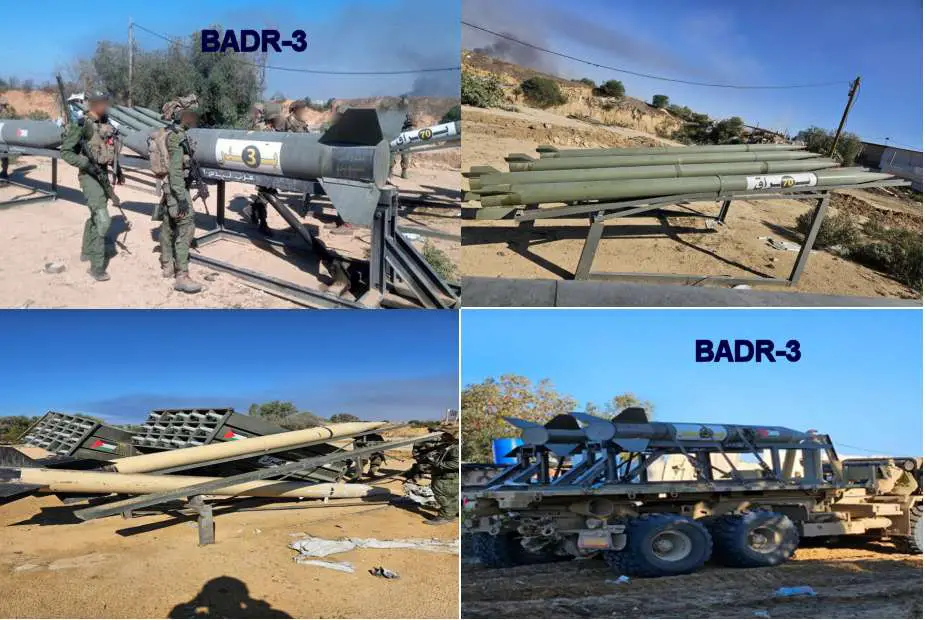Israeli Army captures Iranian Badr-3 Rocket Launcher System in Gaza
On November 17, 2023, during a targeted operation in the Gaza Strip, the Israel Defense Forces (IDF) made a significant discovery. In their search for weapons caches, they uncovered Iranian-origin Badr-3 Rocket Launcher System. This discovery highlights a substantial evolution in the ballistic capabilities of the armed groups operating in Gaza.
Follow Army Recognition on Google News at this link

IDF discovered numerous weapons caches with rockets. (Picture source: IDF)
The Iranian-origin Badr-3 Rocket Launcher System, with an estimated range of 160 kilometers and a 250-kilogram explosive payload, represents a notable advancement in military technology. Its ability to inflict significant damage from a distance makes it a major strategic threat. This interception underscores not only an increased security risk for Israel but also the potential involvement of Iran in arming the armed groups in Gaza.
The use of missiles by militants in Gaza has undergone significant evolution in terms of technological sophistication and strategic range. This evolution has occurred in several key phases, marking an escalation in the offensive capabilities of the region's armed groups.
In the early 2000s, the first generation of missiles, the Qassams, inspired by Russian Katyusha rockets, made their appearance. These missiles, with an initial range of just 2 km and an explosive charge of about 1 kg, were used against close targets, including the Sderot settlement. Although modest in their capabilities, these early missiles symbolized the beginning of a new era in the armed struggle of the groups in Gaza.
Between 2002 and 2005, the Qassams underwent significant improvements. The range of these missiles was increased to 16 km, and their explosive charge was enhanced to reach up to 10 kg. This increase in the range and power of the Qassams marked an important step in escalating the threat posed by these weapons.
After 2005, the armed groups in Gaza diversified and optimized their arsenal. They adopted more advanced rocket models, based on Russian and Chinese designs. Among these new models was the Russian Grad rocket, with a range of 20 to 40 km, as well as missiles inspired by Chinese models reaching up to 45 km. These developments reflected a rise in the technical and strategic competence of the armed groups.
More recently, the integration of foreign technologies and more advanced missiles marked a new turning point. Iranian and Syrian missiles, notably the Fajr 3 and M302, were introduced into the militants' arsenal. These missiles represented a qualitative leap in terms of range and power, with explosive charges of up to 175 kg.
In 2023, the introduction of the Badr-3 rocket symbolized a new level of escalation. With a range of 160 km and a 250 kg payload, the Badr-3 has the capability to reach targets well beyond the immediate borders of Gaza, thus posing a strategic threat to a vast area. This evolution in the ballistic capabilities of the armed groups in Gaza indicates a continuous escalation of the threat and an increase in their offensive potential in the regional conflict.























